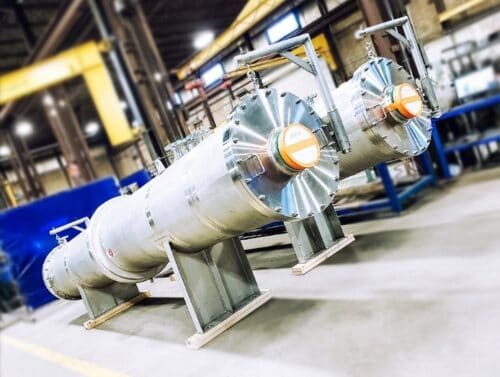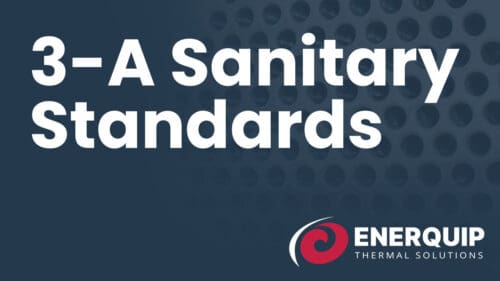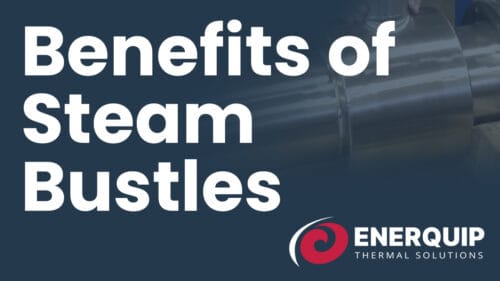Freezing Fouling in Shell and Tube Heat Exchangers: What you need to know
Leave a CommentFouling is a natural part of heat exchange. However, not all fouling is alike. Some types are more common but less damaging, and many can be anticipated long before installing an exchanger.
One type of fouling that is relatively less common but potentially very damaging is freezing fouling. It’s important to understand this phenomenon, what causes it, how to prevent it and which measures to take when it does happen.
What is freezing fouling?
Freezing fouling, also called solidification fouling, occurs when the fluid inside the shell and tube heat exchanger seizes up and creates a block of substance that is difficult to remove. There are a number of reasons why this might happen.
Every fluid has a freezing point, and it’s critical that those who work with heat exchangers and the fluids that go inside understand at which temperatures materials will freeze. Intuitively enough, one primary cause of freezing fouling is when the heat transfer surface falls below a fluid’s freezing point, Thermodedia explained.
This might be the case when using a shell and tube heat exchanger to chill water. If the heat exchanger surface that is in contact with the water (i.e. the tubes if the water was entered on the tubeside) falls below 32 degrees Fahrenheit, the water will begin to freeze. How much it will freeze depends largely on the temperature difference between the tubeside and shellside fluids, among other factors. It could be a matter of a thin sheet of ice on the surface of the tubes (or shell, if the water is on that side), or a thicker mass of ice.
Moist air can also freeze when coming into contact with a cold surface. Keep this in mind if you’ll be working with low temperatures and anticipate evaporation or mist to result from your process.
Freezing fouling doesn’t necessarily mean the entire fluid will solidify. When using a solution, there may be various components with differing freezing points. Those ingredients that have relatively higher melting points could be challenging to keep liquid in certain processes. The solution may separate as a result, resulting not only in a partially frozen slurry, but also a liquid with different proportions of components than expected.
Freezing fouling and crystallization fouling
Crystallization fouling occurs when some solutes within a solution solidify and begin to accumulate on the heat transfer surface, wrote InTechOpen, an open access science, medical and technology book publisher. Depending on the solute and the conditions, people who work with shell and tube heat exchangers may refer to this phenomena with different terms, like:
- Scaling, one of the most common, describes solid deposits that are very difficult to remove.
- Sludge, softscale or powdery deposit describe softer, more porous, mushy or slimy deposits.
Crystallization fouling and freezing fouling are two different events, but they do have a Venn diagram-like overlap when it comes to waxy deposits. When waxy hydrocarbons from a hotstream come in contact with the cold surface, waxy deposits can form on the heat transfer surface. These types of deposits may technically be crystallization fouling, but many people identify it as freezing fouling.
Paraffin is one substance in particular that commonly results in a waxy precipitate, according to the Society of Petroleum Engineers’ PetroWiki. Naphthenic hydrocarbons, which like paraffin are found in crude oil, also causes wax-like deposits, but are much softer and referred to as “microcrystalline wax,” often accumulating at the the bottom of the vessel in a sludge-like substance. Since waxes have a high melting point – paraffin’s is generally between 104 and 158 degrees Fahrenheit – these deposits are often seen at ambient temperatures.
Preventing freezing fouling in a shell and tube heat exchanger
To avoid freezing fouling in your shell and tube heat exchanger, you must begin with understanding the fluids you’re using and how they respond to different environmental conditions, including temperature and pressure levels. Additionally, when working with solutions that contain solutes with varying freezing points, it’s critical to understand the properties of all components.
When you know which substances you’re working with, their properties and expected behaviors, you can prevent freezing fouling by not creating the conditions in which they’ll solidify.
With more complex substances, like crude oil, it’ll be more difficult to determine exactly which conditions will lead to the formation of solid materials. In the case of paraffin, engineers need to know the wax appearance temperature, also called the “cloud point” or “WAT.” This depends on many factors, including the weight and size of paraffin molecules, the ratio of water to oil, the composition of the oil and the presence of other substances that aid in solidification, among others.
In some cases, freezing fouling could result from a malfunctioning component or an incorrect setting, according to an article for Plant Engineering. This may be the case if your chiller, condenser or evaporator freezes up when it’s not supposed to. In these cases, you may be unprepared for the event, and the ice formation can cause considerable damage if allowed to continue. Much like a pipe bursting during a cold winter, your tubes or shell could pop open with the pressure of the expanding ice.
If all components are set and behaving as they should, taking precautions ahead of time could prevent a freeze-up. If you’re using antifreeze to prevent it but ice forms anyway, you may need to readjust your concentration of antifreeze. A thermal protection device or control system can also be advantageous. Finally, if you’re preparing your equipment for a seasonal shut-down in the winter, not properly and thoroughly draining your equipment can lead to freezing.
Responding to freezing fouling
In some cases, a certain process requires engineers to use substances that may solidify, risking the occurrence of freezing fouling. In these instances, it’s important to be prepared for if and when freezing fouling occurs so you can prevent further damage to the equipment.
If your freezing fluid is on the shellside, you may be able to warm up the equipment using electric tracing, Chemical Processing noted. Heat exchangers exposed to cold environmental conditions can also be insulated to help prevent damage from the elements.
However, if you know the fluid is one that would be very challenging to remove in this way, it may be better to allocate it to the tubeside. If it permanently solidifies with little or no hope of rescuing it from the exchanger, you’ll at least be able to remove the tube bundle for replacement; if an unmovable substance sets on the shellside, on the other hand, it’d be nearly impossible to take out. You may wind up needing to invest in an entirely new exchanger.
If your freezing fouling consists of waxy deposits, you can generally remove these by melting, using steam, hot water or hot oil, or using chemicals to dissolve the wax.
Freezing fouling may be a constant risk in your operation, or it may be an outlier event. If your equipment has sustained damage due to freezing and need a replacement part or a new custom shell and tube heat exchanger, reach out to the helpful engineers at Enerquip.







